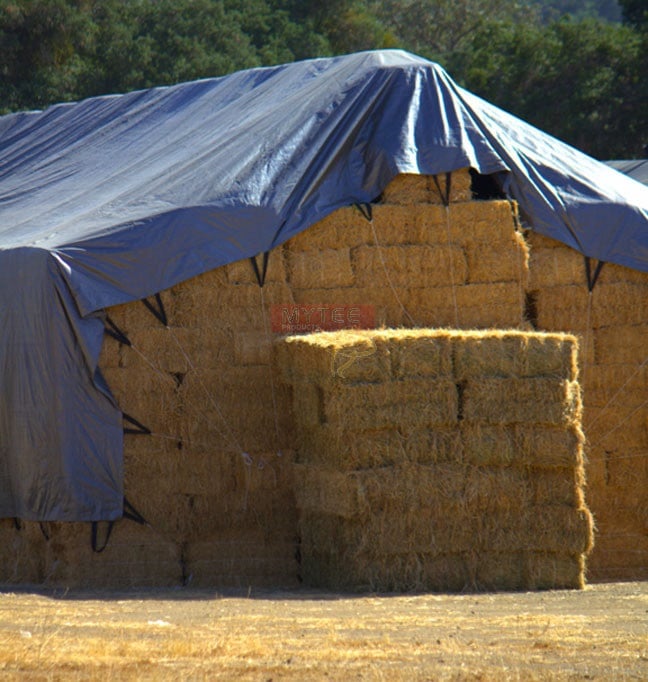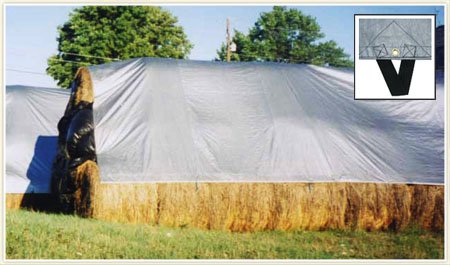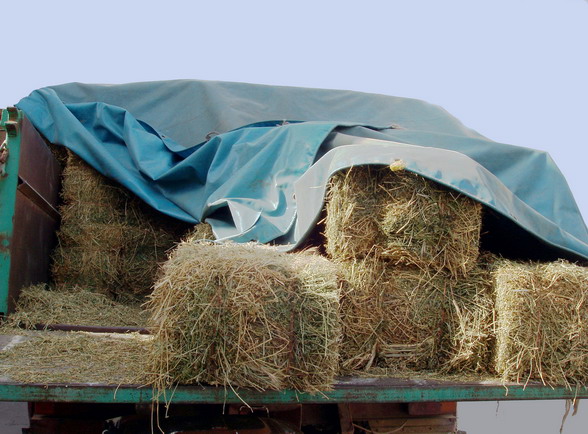While conducting a brief review of past blog posts, it occurred to us that it would be a good idea to share safety tips involving hay tarps. We talk a lot about trucker safety for cargo control, but apparently the topic of hay tarp safety hasn’t been addressed. This post aims to change that.
It is important to start an ongoing discussion centered around using hay tarps safely, beginning with this post covering a few basic principles. We may produce future posts that get into more advanced principles for hay stacking, tarping, and moisture control.

If you are looking for a way to protect your hay without using a barn or storage shed, Mytee Products has several options to choose from. We carry a full line of hay tarps along with temporary storage structures made with galvanized steel pipe and heavy-duty PE fabric.
And now, on to the basic principles of hay tarp safety.
Principle #1: Limit the Size of Your Stacks
We never cease explaining to truckers how dangerous it is to walk on the top of a load to secure tarps. In fact, we recommend avoiding the practice if at all possible. The same applies to stacks of hay. Every new layer you add to a stack also adds height. If your stacks are too high, you may find you have to climb on top in order to properly secure tarps. Remember: with height comes increased danger in the event of a fall.
It is best to limit your stacks to 10 or 12 feet, at the most. If you do have to climb on top, make sure you use an extension ladder long enough to elevate you above the top of the stack as you climb on. Attempting to get on top of a stack using a stepladder is just not wise.
Principle #2: Don’t Tarp Under Windy Conditions
Avoid attempting to deploy tarps on windy days. Hay growers, like truck drivers, sustain a good number of their tarp-related injuries as a result of wind catching tarps. If you absolutely must deploy a tarp on a windy day, make sure you stand up wind of your haystack. Then, if the wind does catch the tarp, it will blow away from you instead of against you.
Principle #3: Get Help When Tarping
Hey tarps are a lot heavier than you might think. Therefore, do yourself a favor and get help when you are ready to cover your hay. There is no need to be a hero by trying to tarp yourself. Being a hero could result in a hernia, a back injury, or something worse.
Principle #4: Wear Protective Gear
You will most likely be using straps or bungee cords to secure your tarps. As such, you should wear head and eye protection. You never know when something could snap back and strike you with enough force to knock you on your backside. The last thing you need is a head or eye injury.
Principle #5: Check Grommets before Deploying
With the exception of damaged seams, the weakest link on any hay tarp is its grommets. You can go a long way toward remaining safe by inspecting every grommet prior to deployment. If a grommet appears even slightly damaged or loose, do not use it. Either get the tarp fixed or work around the grommet in question.
At Mytee Products, we firmly believe in the safety-first mindset. We encourage our hay tarp customers to use the utmost care when covering hay stacks this fall. Your hay can be replaced; you cannot be.










